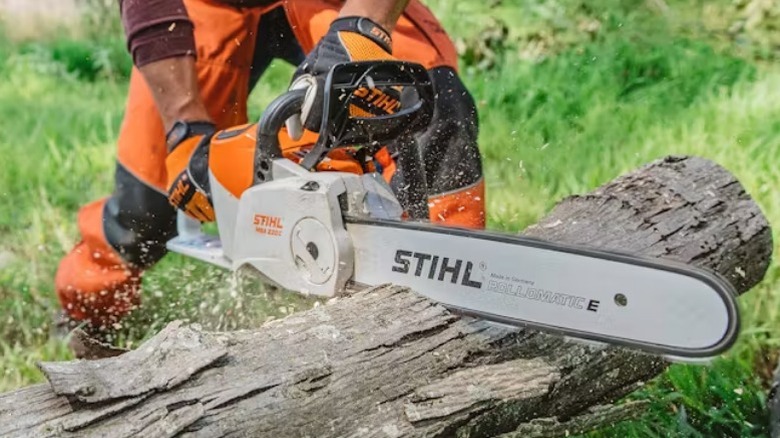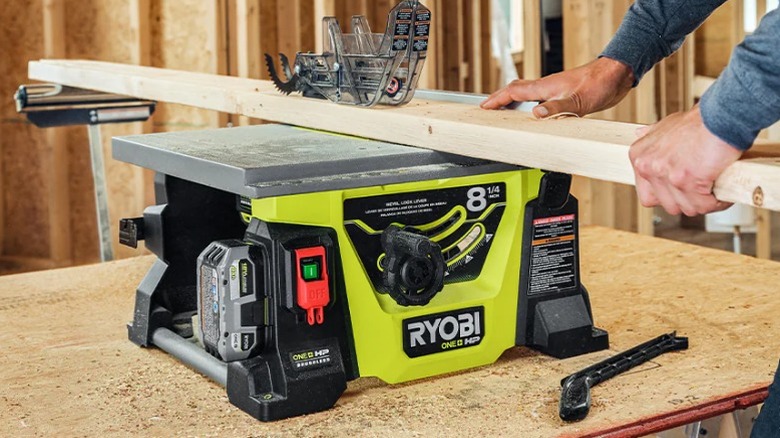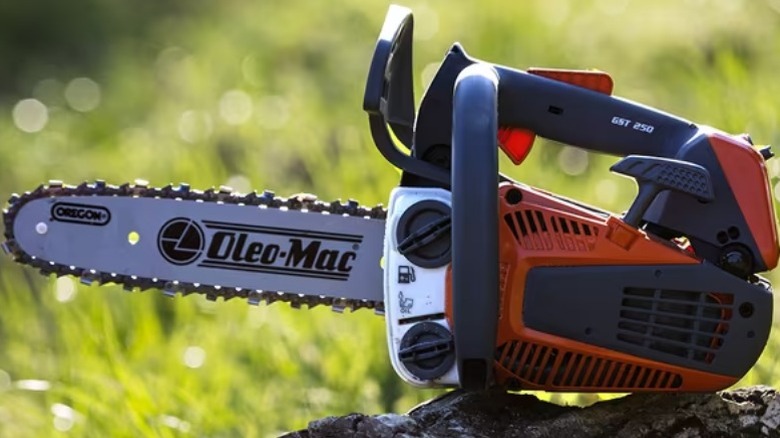Which Tools Have The Worst Track Record For Injuries?
In a perfect world, workshop and jobsite injuries would never occur. Unfortunately, we all know that isn't the case. Many tool manufacturers have worked diligently to provide as many safety mechanisms as possible and to encourage users to maintain safety standards when operating dangerous equipment, but accidents still happen. Tens of thousands of people end up in emergency rooms every year as a result of accidental injuries involving power tools, from professional craftspeople to weekend DIYers. It isn't just industrial equipment either. There are a lot of commonly used power tools that can be incredibly dangerous, and their misuse can lead to serious harm. This is one of the reasons that it's so important for the people who use these power tools to treat them with respect. It's also why personal protective equipment and using tools according to the manufacturer's guidelines are both so important.
Most tools have the capacity to injure the people operating them if they're used improperly, but there are some tools with track records that are much worse than others. There aren't, for example, a whole lot of documented cases of people ending up in the hospital from misusing a tape measure. Power saws, on the other hand, are famously dangerous. Over 50,000 power saw-related injuries occur every year in the U.S. alone, and it seems there are two varieties of power saw that cause more serious injuries than any other: The chainsaw and table saw.
That isn't to say that you shouldn't ever use either tool or that they aren't still valuable additions to any woodworker's collection. It just means that those who choose to operate these machines should be aware of how dangerous they are and be sure to always maintain strict safety protocols for every cut they make.
Chainsaw injuries are fairly common
The type of power saw that's most likely to cause serious injury is the chainsaw. More commonly used in outdoor settings for forestry or landscaping, chainsaws are largely dangerous because of how people use them. The task usually involves an inherent risk of environmental factors that are difficult to predict or control. There are a lot of ways to get hurt by a chainsaw when felling and removing the limbs from trees –- particularly when ladders are involved. But even cutting a downed log into rounds for firewood can be dangerous if the saw catches or pinches the chain blade as it's rotating, causing kickback.
An article published on the study of Occupational and Nonoccupational Chainsaw Injuries in the United States from 2018–2022 cited Osha research data to determine the commonality of these kinds of incidents. "For this five-year period, an estimated 127,944 people were treated in U.S. emergency departments for chainsaw-related injuries," the article states. "More than 200 non-fatal and 57 fatal occupational chainsaw-involved injuries were found during the same period. [...] Upper and lower extremities were the most likely injured body parts, with open wounds from cuts being the most common injury type. The majority of fatal injuries were caused by falling objects such as trees and tree limbs while using a chainsaw." This article also underlined the severity of the injuries that people who were hurt using chainsaws suffered. It stated that, "85% of patients required surgical intervention, with 20% experiencing long-term disability." According to OshAcademy, they are also associated with 36,000 hand injuries a year
Table Saw injuries are a close second
The table saw's ability to make both long rip cuts and mitered cross cuts with a high degree of precision makes it one of the most useful and versatile pieces of equipment that you can own. They are available from a wide array of power tool brands, but their commonness shouldn't trick you into thinking that they aren't dangerous tools. There are a lot of ways a person can get injured using a table saw. Projectile debris and kickback are common sources of injury, particularly among those not wearing eye protection. However, the larger issue is the proximity of users' fingers to the blade itself. This is why they're often considered one of the most nerve-racking tools for even pros to use.
According to a study conducted by trauma specialists, Brenda J. Shields, John R. Wilkins, and Gary A. Smith, the table saw has been connected to more injuries than any other woodworking tool. "An estimated 565,670 [...] table saw-related injuries were treated in US Emergency Departments from 1990 to 2007," the study states. "Children (younger than 18 years) were more likely to be injured at school [...], whereas adults were more likely to be injured at home." It goes on to claim that fingers and thumbs were injured in 86% of incidents, lacerations occurred in 66%, and amputations of digits occurred in 10% of cases. OshAcademy estimates they are involved in 30,000 hand injuries annually.
Our methodology
I've been a woodworker for the better part of a decade, specializing in furniture and decorative pieces while also occasionally taking on larger construction projects. As such, I'm intimately familiar with the potential dangers of using a wide range of different kinds of power tools, including both table saws and chainsaws. I'm also familiar with the most prominent safety practices for protecting yourself from injury while working with them.
In making this list, I consulted census data, professional records, and scholarly sources that recorded the commonality and types of injuries that people have received while using power tools. More people may have hit themselves in the thumb with a hammer than cut themselves on a table saw, but for the purposes of this piece, I focused on tools associated with the types of injuries that result in hospitalization or surgical intervention, as opposed to simple bumps and bruises.
Not all injuries are reported by the same statistic-gathering groups, and there are some inconsistencies in the exact number of injuries reported, but there is significant evidence to suggest that chainsaws and tablesaws are the power tools most commonly associated with major injuries in the U.S.



